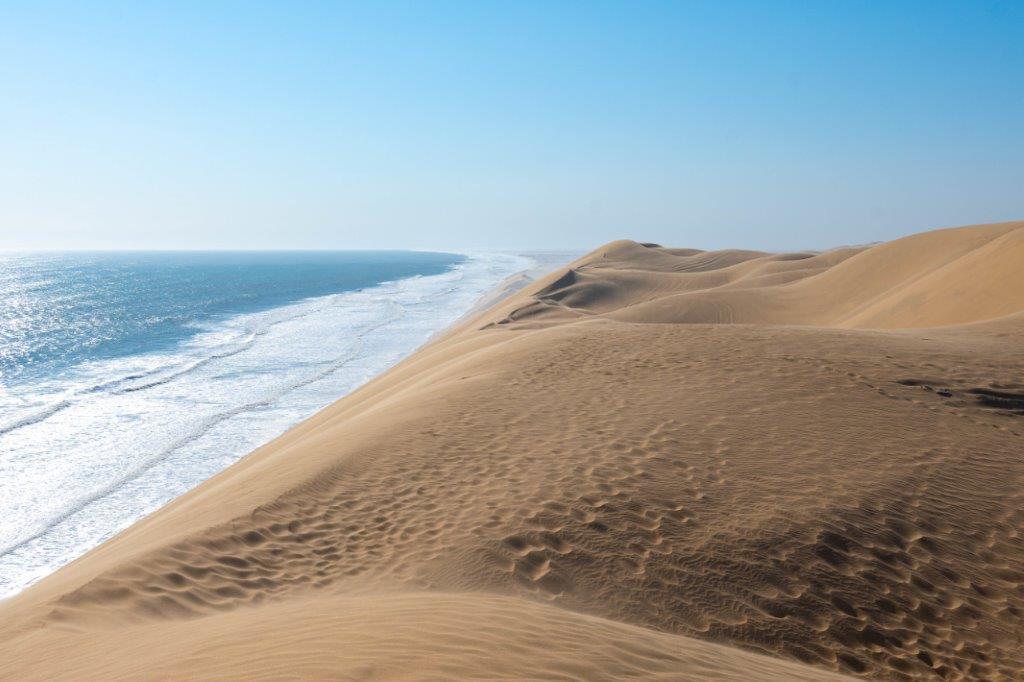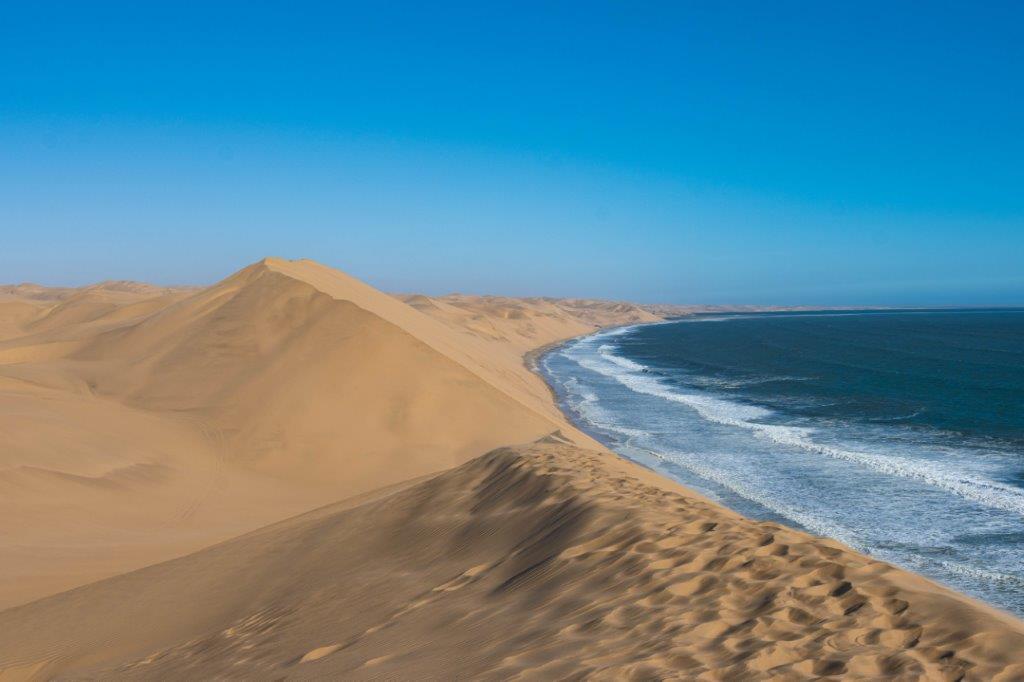So after Etosha, we set off to Damaraland and then the Namib Desert and while we were passing through Damaraland, Kennedy explained that his tribe, the Damara people, used to live in the north of the country where they could find more water and therefore they had cows. But, unfortunately, they were forced down into the dryness of the desert and due to way less rain, they had to take care of goats instead as their only source of meat and milk in that area. People live in houses made of tin sheets and in the summer these houses would get unbearably hot and in the winter period, they’d be super, super cold. So people mix water, soil, and animal dung and add it on top of the house for insulation.
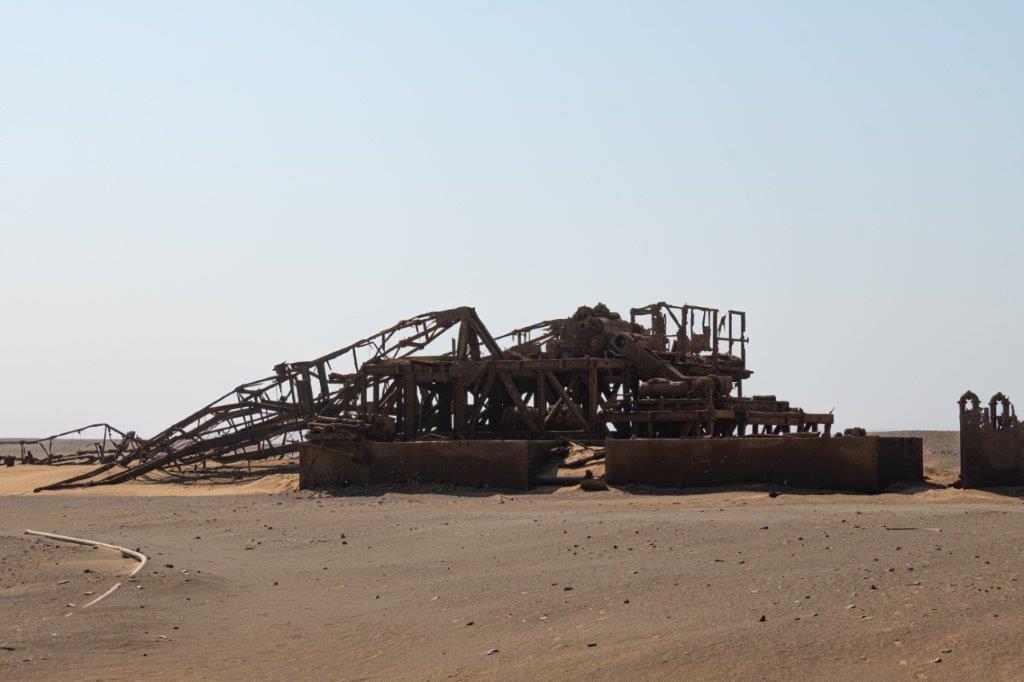

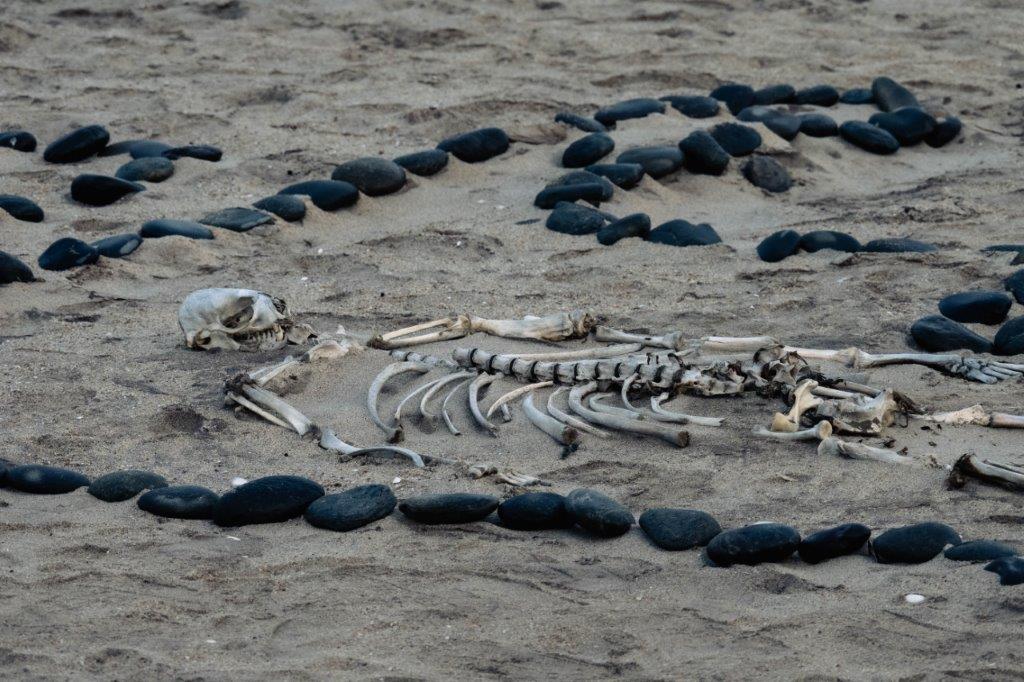
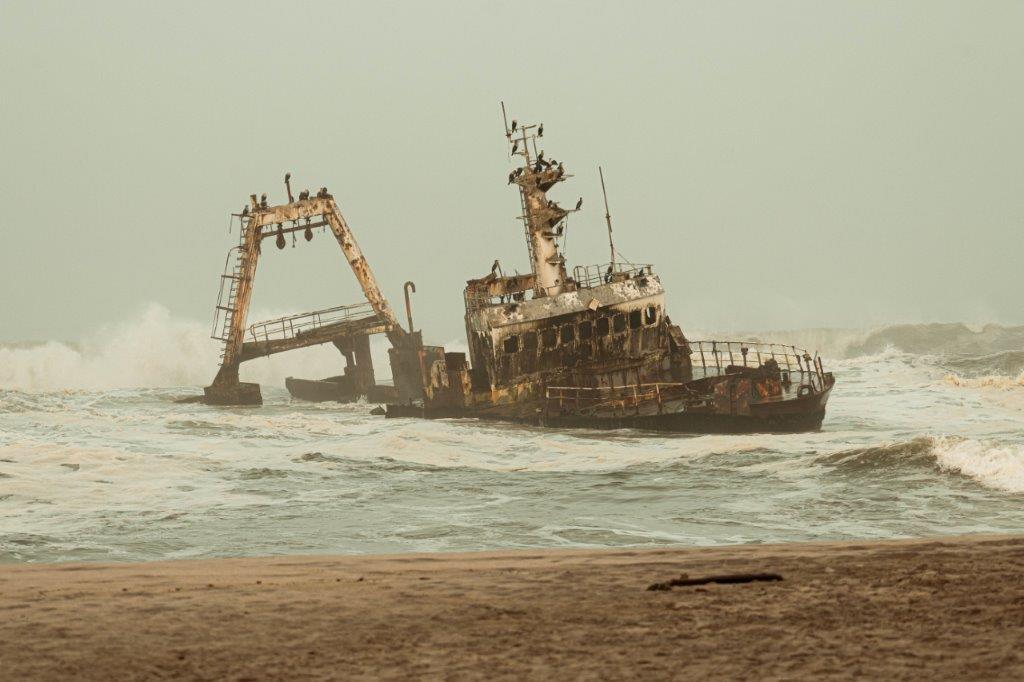
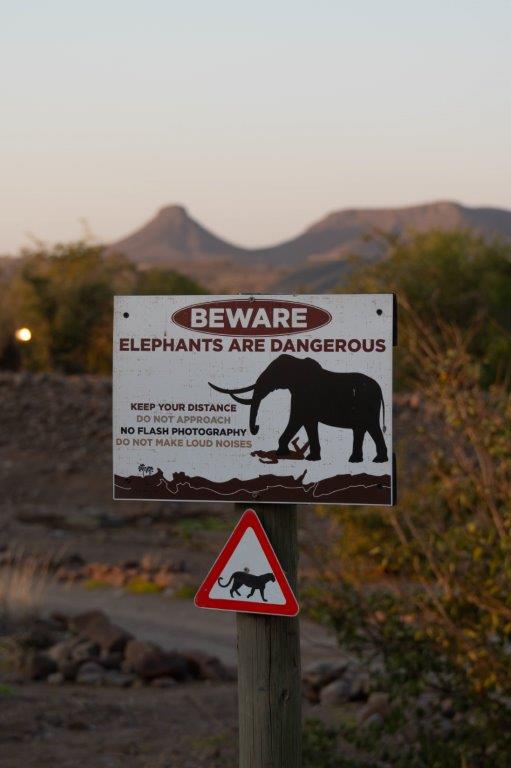
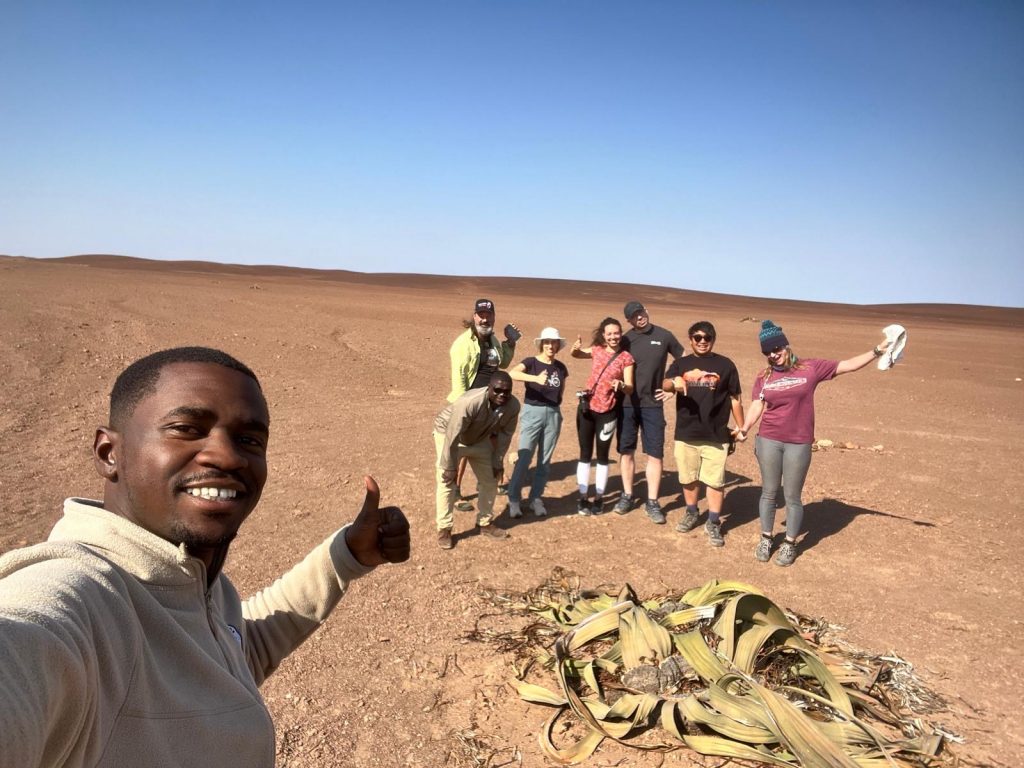
Another interesting fact is that in the area around the coast, the currents are very strong due to a mix of two wind streams and many ships crash, so part of the coast is called Skeleton Coast and it’s full of shipwrecks, driftwood on the beach, an abandoned oil platform or two and bones of seals, whales, and birds. It quite realistically looks indeed like a skeleton coast. But it is still beautiful because of the mixture of red and yellow sands and the mighty waves and the mountains in the distance. In the Namib Desert lives a unique and endemic succulent plant, called Welwitschia mirabilis which is endemic to Namibia and Angola and survives solely by absorbing the moisture from the night’s fog and is usually the only plant you would see around. Damara people like to identify with it as a form of strength and will to survive in super harsh conditions, said Kennedy.
One of these nights we stayed at a beautiful campsite called Palmwag which, unlike Etosha, where the whole camp area was isolated from the park with proper walls, here nothing separates you from the wildlife roaming around.
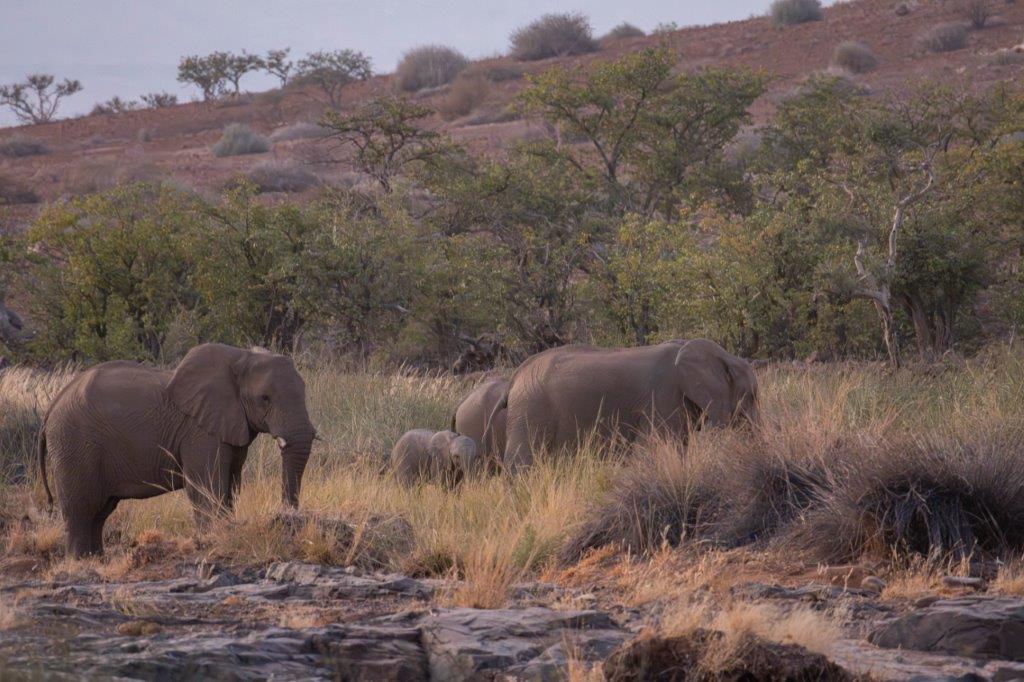
So Kennedy warned us to be careful as elephants may roam around the camp. He told us not to leave anything outside the tent and to be super careful when walking around and never to cross the stones that surrounded the camp, which were literally stones on the ground surrounding the camp, but no fence, absolutely nothing, it’s more to mark the area but brings no other use whatsoever. Kennedy told us the story of the first time he saw an elephant from up close in his experience as a guide – he opened his tent and saw an elephant he hadn’t heard – you usually hear no footsteps due to the super soft padding on their feet, which make them virtually impossible to hear until you hear a branch they munch on right above your tent. So that’s what happened to Kennedy – but he saw the elephant and instead of going back to his tent quietly and leaving the beast do its thing, he opened the tent and ran as fast as he could to his other colleague’s tent and hid inside 😀 They laughed at him about it later on a lot. 😀 Something you should.. not do 🙂 So the next morning we saw elephants right next to us – they were indeed there 🙂 Four adults with a tiny baby <3
Below the Namib-Naukluft National Park and before you enter the Namib Desert‘ sands, flamingos have found their home – right next to Swakopmund, thousands of them, with plenty of food and favorable conditions, they seem to thrive and locals say they stay there year-round. A bit below that is Cape Cross which is also home to thousands of creatures, but this time that’s the Brown fur seals. It was the stinkiest stop on our tour around Namibia 😀 Thousands of seals burping, growling, and making all sorts of funny noises, some fighting with each other, babies calling for their moms, and others sucking milk like in the photo below.
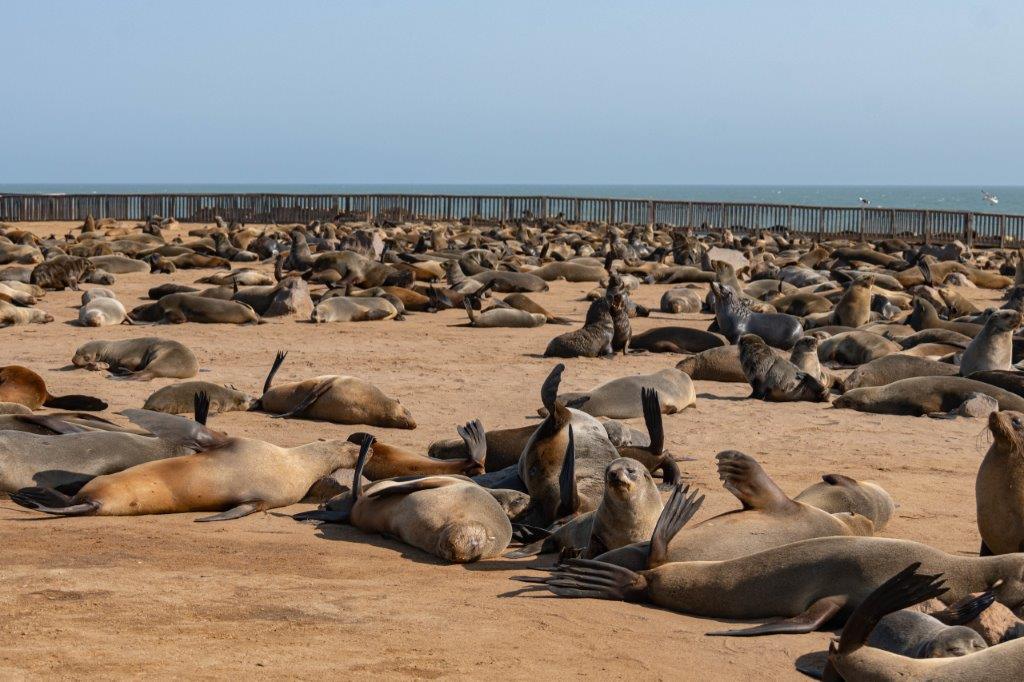

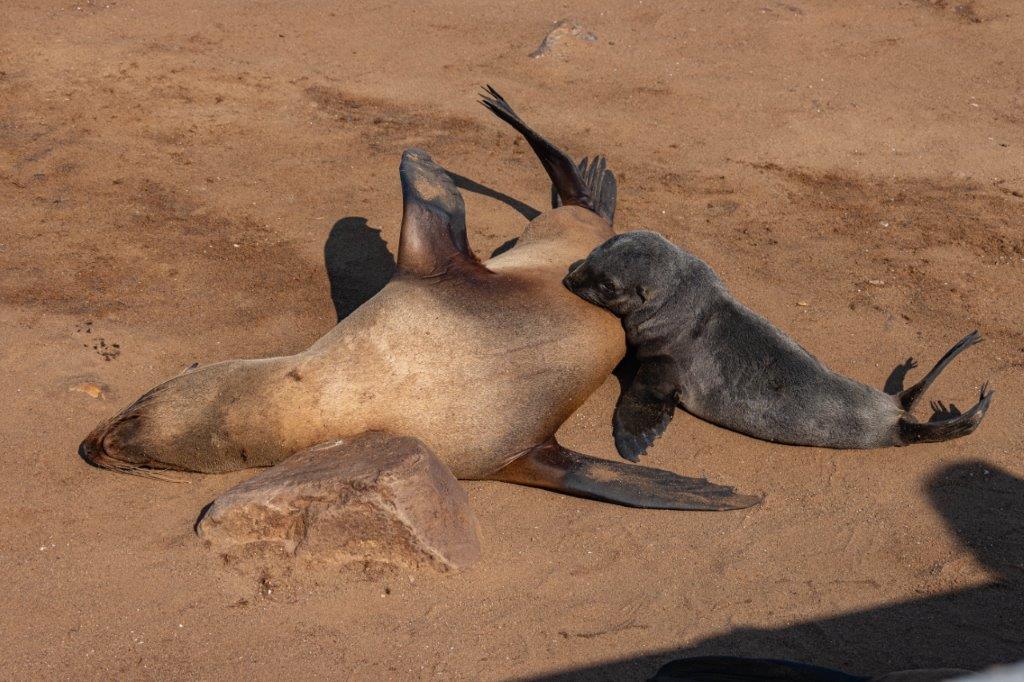
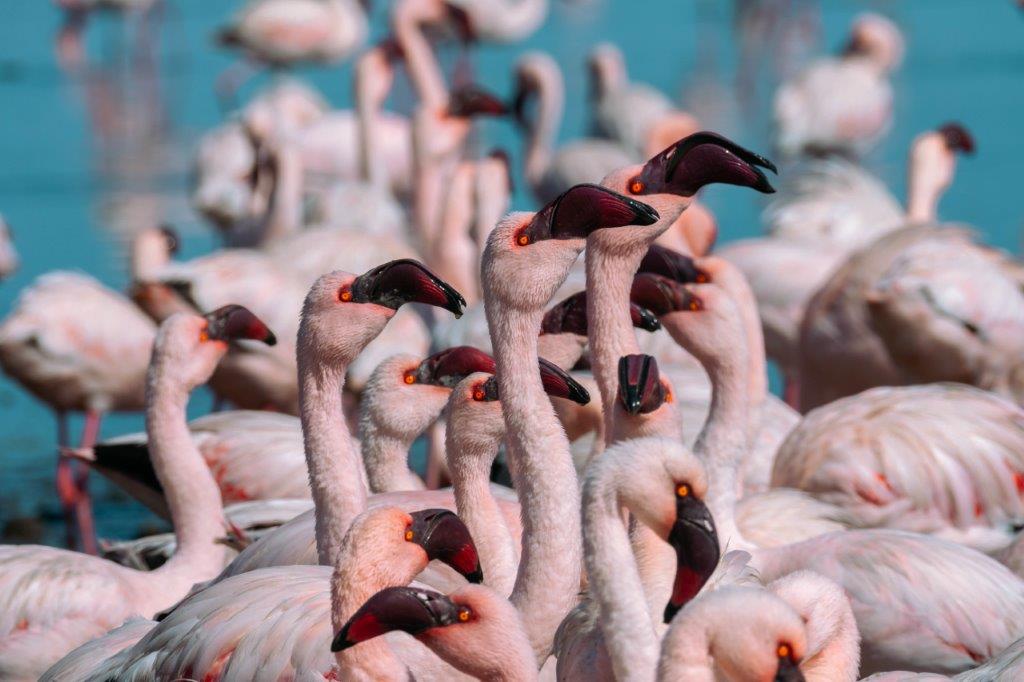
You can walk (presumably, safely) on a bridge-like structure in between the seals but it’s actually broken at a few places and seals quickly get on the platform so at some point you may get stuck with seals in both directions of the path and also everywhere around you out of the fence. And you shouldn’t approach too close the seals because they may get aggressive and bite you. When I got stuck like that, I kinda panicked a bit and someone told me I had to clap and walk towards them and they would run away, and phew! It worked! I still had all my legs and arms and no need to worry about seal finger disease or rabies, as little chance there would be, still not 0.
So in Swakopmund, we had a few options for activities to choose from: a drive through the Sandwich Bay, where the desert meets the Atlantic Ocean, skydive (which Shin did), a helicopter ride over the Sandwich Bay (Mary did that when she was in Namibia, the same time as me but with another group of people and slightly different itinerary) and also a “Living Desert” tour, and quad bike riding.
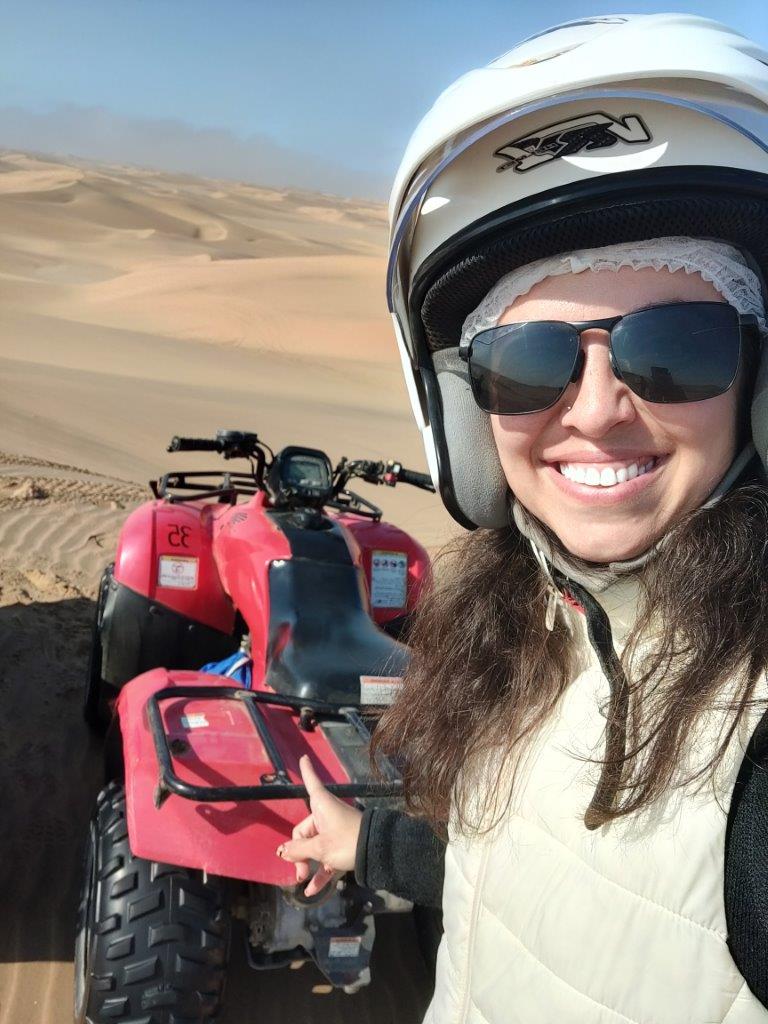
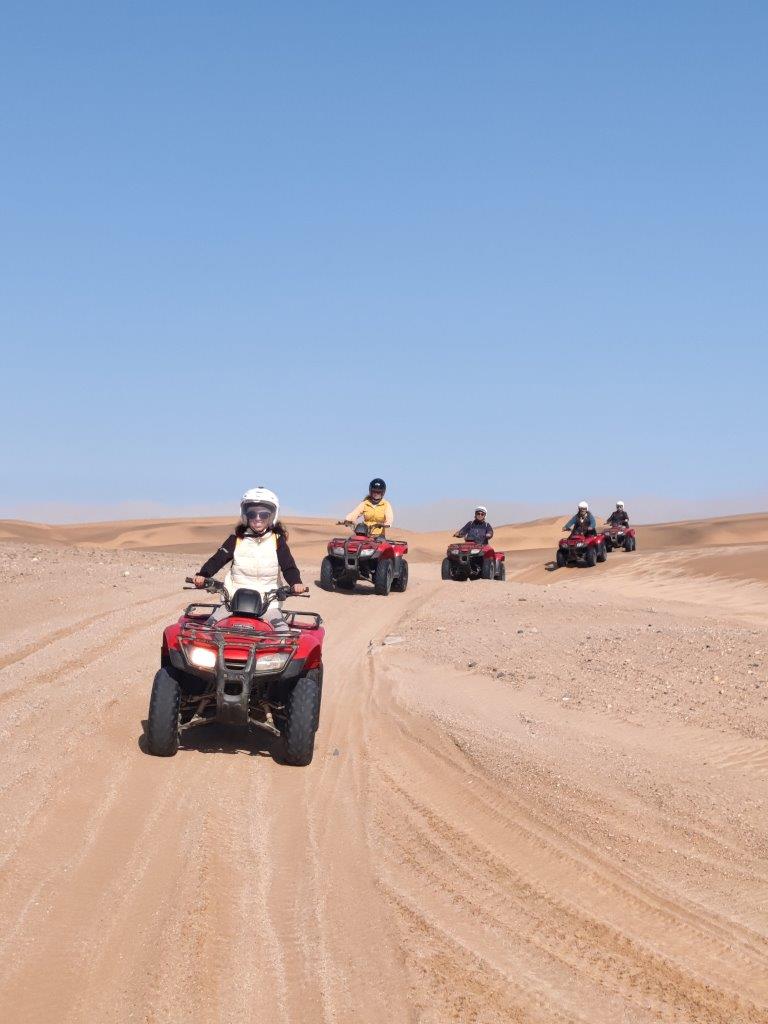

We started with Quad bikes, we had to go in a row over the desert after the instructor who decided to put the women after him and the guys last. And it made total sense.. I thought it’d be super easy but somehow I couldn’t control the thing. I wanted to turn but it wouldn’t turn. I tried to turn but it felt as if the bike kept going in the opposite direction which got me scared and after the first, like, 10min of me being THE WORST of the worst, which honestly I did not expect, the guide gave me a last chance and said if I cannot make it I can ride on his bike and hold on to him and later someone would come to pick the bike. Apparently this “threat” worked and somehow my brain relaxed a bit and I figured out how to control the bike. And I even started enjoying it. But my thumb, which was supposed to control the speeding, hurt like crazy. In the end, though, I really enjoyed it and I’m super happy I didn’t end up riding on the guide’s bike but rode my own.
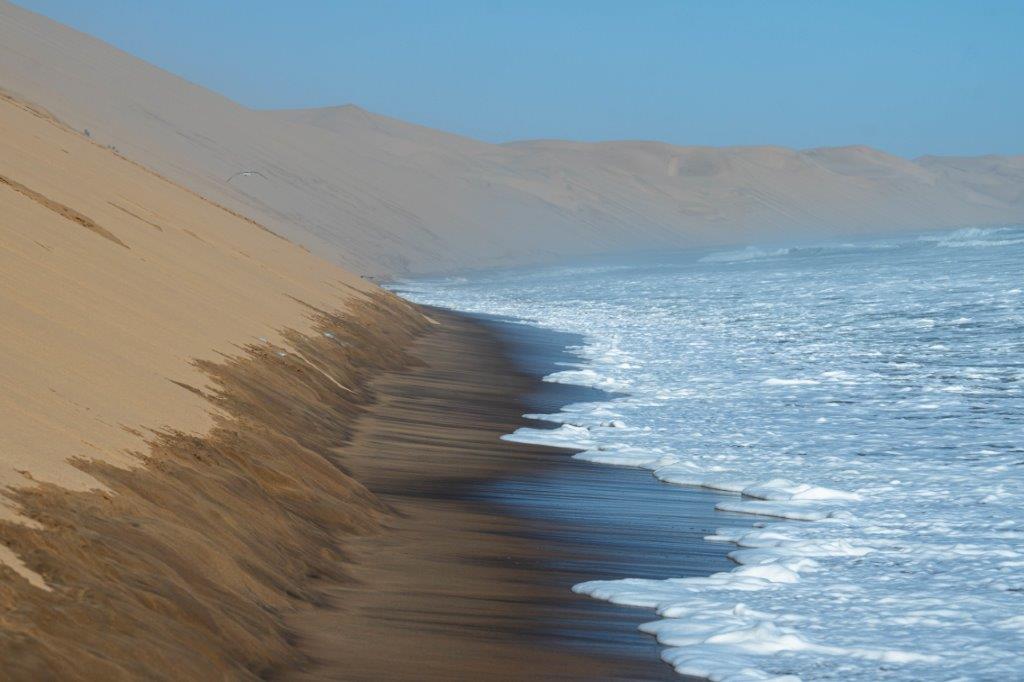
Next was the Sandwich Bay tour. That one was long, starting with the flamingoes I mentioned above, passed through the salt flats and into the coast. We got to ride between the waves and the dunes! Not everyone gets that chance, it depends on the currents and the moon phase and we managed to go there, but Shin did the tour the next day and he couldn’t go there. We climbed one of the almost vertical dunes from down the coast, then went up the dunes to see the magnificent view of a little oasis where a river was going into the ocean and there was lush grass around and more flamingoes.

Riding to the top of a high dune and then sliding down almost vertically was quite scary and gut-itching or whatever that feeling you get on a rollercoaster is called. Our driver and guide, Gerard, a white Namibian with a French name 🙂 knew a lot of things and he even found one of the most interesting desert creatures – a transparent, colourful little gecko, a Namib sand gecko, that is active at night and hunts for bugs then. Gerard knew what the holes they make look like so when he saw one, he stopped the car, and dug the poor lizard out to show it to us, keeping it in the shadow. It was very quick, a few photos and back to the sand, so that was good. This was one of the creatures for which I wanted to do the Living Desert tour so I was extra happy. Then was the dune sliding part on one of the high dunes on a board that looked like the back wall of an Ikea wardrobe, you had to lay on top of it, lift the front up and legs up, on your belly and go head-first. It was quite scary and I wasn’t sure I wanted to do it but they kind of forced me 😀 But it was super fun in the end except that Maite was before me and she didn’t move away from the spot where she ended up with the board and I crashed into her, I was bracing for impact and shouting at her to MOVE THE duck OUT OF THE WAY 😀 and luckily she did but it was a VERY close call.
They also showed us how much iron is in the sand by taking a handful of sand and separating the iron from it with a magnet. Super cool. Also a veeeery closeup photo of the sand showed that the particles have all the colours of the rainbow. Soo beautiful! Amazing tour, cannot recommend it enough!

